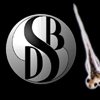

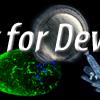
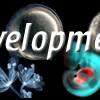
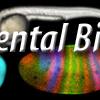
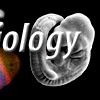
      |
|
Richard J. Goss, 1925 -1996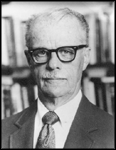 Developmental biology mourns the passing of another of this century's outstanding pioneers, and yet celebrates his life not only for his wide-ranging scientific contributions but also for the humanity that he brought to that endeavor. Professor Richard J. Goss recently lost his battle with cancer, ironically succumbing to cellular and tissue growth, a phenomenon that he had spent most of his professional career studying; indeed his first book was entitled Adaptive Growth (Academic Press, 1964). Writing in his unpublished autobiography, which he called "Learning from Experience," Dr. Goss recalled that if there were a pervading theme in his life, "it has been the love of nature." In early childhood he dedicated himself to an ever-intriguing dialog with and discovery of that nature and eventually became an internationally renowned authority on animal growth and regeneration. His numerous scientific publications and books include the classic Principles of Regeneration (1969), still regarded as the primer for anyone entering the field. Following retirement, he increased his activities as an eloquent spokesman for rational inquiry in the science versus religion debate. He was a scholar with intense but unbiased curiosity, a person of probity and scrupulous honesty, known as well for his warm and generous personality. Dr. Goss was a true New Englander, born 19 July, 1925, in Marblehead, Massachusetts, the son of Donald C. and Ruth (Johnson) Goss of Swampscott, Mass. Following secondary school, he was admitted to Harvard University but made the fateful decision to join the Army Student Training Program. The requisite basic training sent him to Fort Devens rather than to Harvard Yard, and as World War II escalated, he soon found himself touring battle-torn France and Germany serving in General George Patton's Third Army, combat infantry- the action that he saw as a front line bazooka man made lasting impressions, as it did for so many of his generation. The War ended in time for him to start fall semester (1945) as a freshman, but with credits attained in summer courses ("to make up for the lost years in the Army"), he earned his bachelor's degree from Harvard in just three years (1948). Returning to his childhood interest in insects, he stayed on under the tutelage of Professor Frank Carpenter (and spent one memorable summer as an entomologist on the Pacific island of Yap) to earn master's (1951) and doctoral degrees (1952). His doctoral dissertation concerned the embryology of the book louse, Liposcelis divergens, published in two manuscripts in the J. Morphol.; his father, an MIT loyalist, therefore suggested that his son's thesis (and degree) was "Owed to a Book Louse!" In 1951, he married his high school sweetheart, Marcella (Marcy) Hyde, and the following year with newly minted degree in hand he accepted a faculty appointment at Brown University in Providence, Rhode Island, where he remained until his retirement in 1990 as a Professor Emeritus in Biology and Medicine. This might seem at first blush to indicate a very narrow and cloistered academic life, but in addition to his European military service and his graduate studies on a small Pacific Island, he had learned the ropes (quite literally) as a cowboy one summer in Montana and traveled the world sharing his research findings at numerous international conferences. The Mount Desert Island Biological Laboratory in Salsbury Cove, Maine, also provided seven summers of research opportunities in a congenial, family-like environment. There he delighted in time spent with his family, sharing the wonders of the Maine coast and its many tide pools with his children, and developing life-long friendships with a host of like-minded biologists. His later focus on antler regeneration research presented justification (and funding!) for trips to Poland, Venezuela, Australia, England, Russia and dozens of other venues where deer, and those who study them, might be found. Incorporating observations and data gathered from these trips as scaffolding for the myriad details he discovered through his own investigations revealed general properties of antler growth and regeneration which resulted in another of his books, Deer Antlers (1983). In a recently-penned autobiography he reflected that it was a colloquium by Marcus Singer on amphibian limb regeneration, delivered shortly after his arrival at Brown, that drew him to his wide-ranging exploration of regenerative phenomena. After reading everything he could on regeneration, he populated his laboratory with a host of organisms and "anything that stuck out was in due course cut off to see if it could regenerate" with follow-up experiments on positive results to discover mechanisms, "always of course, using proper sedation." Eventually he settled his own principal research interest on deer antler regeneration, a singular case of epimorphic regeneration among mammals and a preoccupation which provided him nearly limitless discoveries. So few studies had been previously undertaken that deer antlers offered new discoveries with nearly every study and sustained his intellectual curiosity for several decades. But for Dick Goss, research offered the additional enticement of companionship among those who shared the excitement of learning, who also cherished life in all its forms, and who had moreover discovered that "when you match wits with Mother Nature and win, the exhilaration is unsurpassed." One of his fellow grad students in Prof. Carpenter's lab, E.O. Wilson, subsequently came to describe a similar sentiment which he has referred to as 'biophilia.' During his 38 year tenure at Brown Dr. Goss rose steadily through the academic ranks to become the Chair of the Section of Developmental Biology (1972-77), Dean of Biological Sciences in the Division of Biology and Medicine (1977-1984), and the Robert P. Brown Professor of Biology (1985-1990). His extramural activities included appointments as Fellow of the Carnegie Institution of Washington, Summer Investigator and Trustee at the Mount Desert Island Biological Laboratory, Vice President and President of the Rhode Island Zoological Society, Member of the Board of Directors and Acting Director of the Roger Williams Park Zoo (Providence, RI), Chairman of the Division of Developmental Biology for the American Society of Zoologists (recently renamed the Society for Integrative and Comparative Biology), and Secretary of Section G (Biological Sciences) for the American Association for the Advancement of Science. He also served on the editorial board of the Journal of Experimental Zoology. Research for Dr. Goss was more than a profession, it was a natural calling, a modest reaction to intellectual curiosity about the fundamental workings of nature. His precocious enchantment with insects and a host of other creatures had transformed his childhood bedroom into a veritable zoo, thanks to an understanding and very tolerant mother; in later life, he orchestrated activities in a research laboratory that bore a similar range of faunal diversity, though more exotic and significantly more expensive to maintain! A veritable zoo on the fifth floor of Brown's new Biomedical Center, Goss's lab managed during the 1960's and '70's to support the simultaneous study of growth and regeneration in a variety of organs and systems: fish fin regeneration; regulation of lung growth in snakes and pigeons; ear hole regeneration in rabbits and cavies (among many other mammals); kidney hypertrophy in rats; limb regeneration in salamanders and newts; photoperiodic regulation of antler growth in Sika deer... yes a herd of deer on the fifth floor! Several books as well as a host of journal publications on the growth and regeneration of virtually every tissue and organ in the body resulted from those studies. Equally significant, generations of Brown undergrads and grad students fortunate enough to have joined the Goss lab produced many solo as well as coauthored scientific publications. The unflagging attention that he accorded all of his students helped to launch many a career in science and medicine. The role of teacher or, more precisely, educator came as a logical extension of his love of learning, and his desire to share each new discovery with those about him sparked many an enlightening conversation within and beyond the classroom. His guidance in transforming students with untapped potential into confident participants in the dialog of learning represented one of his greatest satisfactions. His courses largely avoided recitation of facts to be recounted on final exams and instead focused on the synthesis of information garnered from diverse experiments and the search for general principles or ideas for incisive experiments from their creative imaginations. He challenged his students to think about and to question the significance and validity of data, to account for apparent inconsistencies; he ultimately sought to engage them in the excitement of discovery. The result was a continuous flow of students, undergraduates as well as graduate students, through his laboratory, all eager to try their own hands at biologizing. He never failed to pay attention to their thoughts and to show enthusiasm for their attempts at teasing fundamental biological secrets from among the marvels of nature. During the 1980's, in response to religious fundamentalist assaults on science education ("overzealous extremists [who] were going to step on my intellectual toes"), he increased his literary contributions to include the humanist literature and became an articulate voice for rational inquiry in the science versus religion debate. He undertook a deliberate and scholarly investigation of the issues associated with both historical and contemporary discourse on the relationship between science and religion. A resident of Barrington, Rhode Island, since 1953, Dr. Goss and his wife, Marcy, beginning in 1975, were also summer residents of East Boothbay, Maine, where they maintained a charming cottage with a magnificent view of the ocean. There Dick enjoyed landscaping and boating, and they frequently received friends and family for lobster feeds at local restaurants, and far-ranging conversation on their deck overlooking the rock-bound Maine coast. With luck and the cooperation of the weather, one might be offered a ride in Dick's boat to take a tour out around some of the small islands off the coast and to see the ospreys nesting on posts jutting from the waters of the harbor. He believed, in essence, that you live only once: but once is enough if you do it right, and he certainly did it right - and well! On 21 November, 1996, Professor Richard Johnson Goss died at his home in Barrington, Rhode Island, at the age of 71. He is survived by his wife Marcy, his son Steven H. Goss of Stone Mountain, GA, his daughter, Elizabeth A. Gillis of Cheshire, CT, and five grandchildren. On the 1 6th of December, 1996, friends, family and colleagues from all over the country gathered in the Manning Chapel at Brown University for a brief celebration and remembrance of Professor Goss's life.
Charles E. Dinsmore, Ph.D.
|
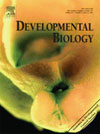 Developmental Biology Published by Elsevier Science under Auspices of Society for Developmental Biology |
|||
|
Page Modified:
|
News | About SDB | Membership | Meetings | Jobs | Education Interactive Fly | Publications | Virtual Library |
© Society for Developmental Biology |